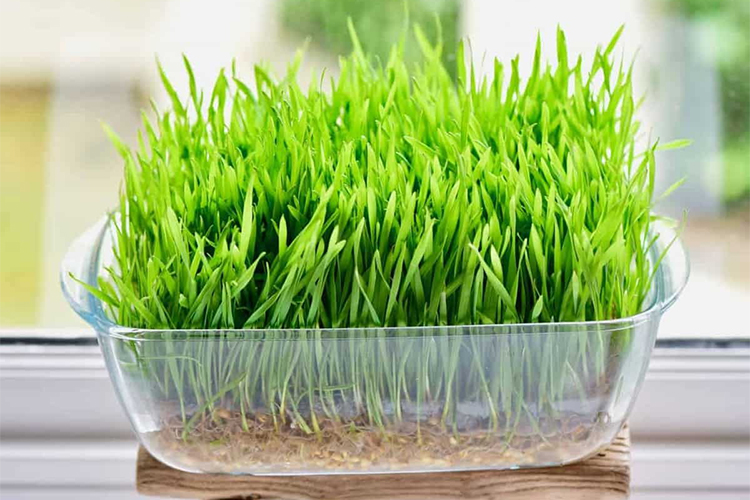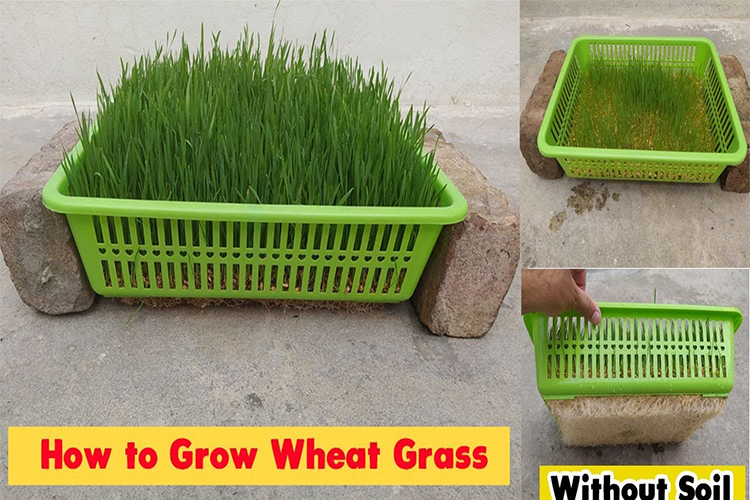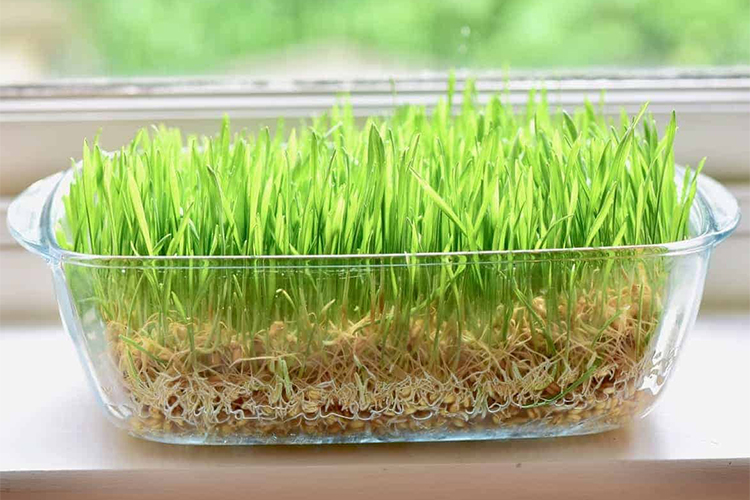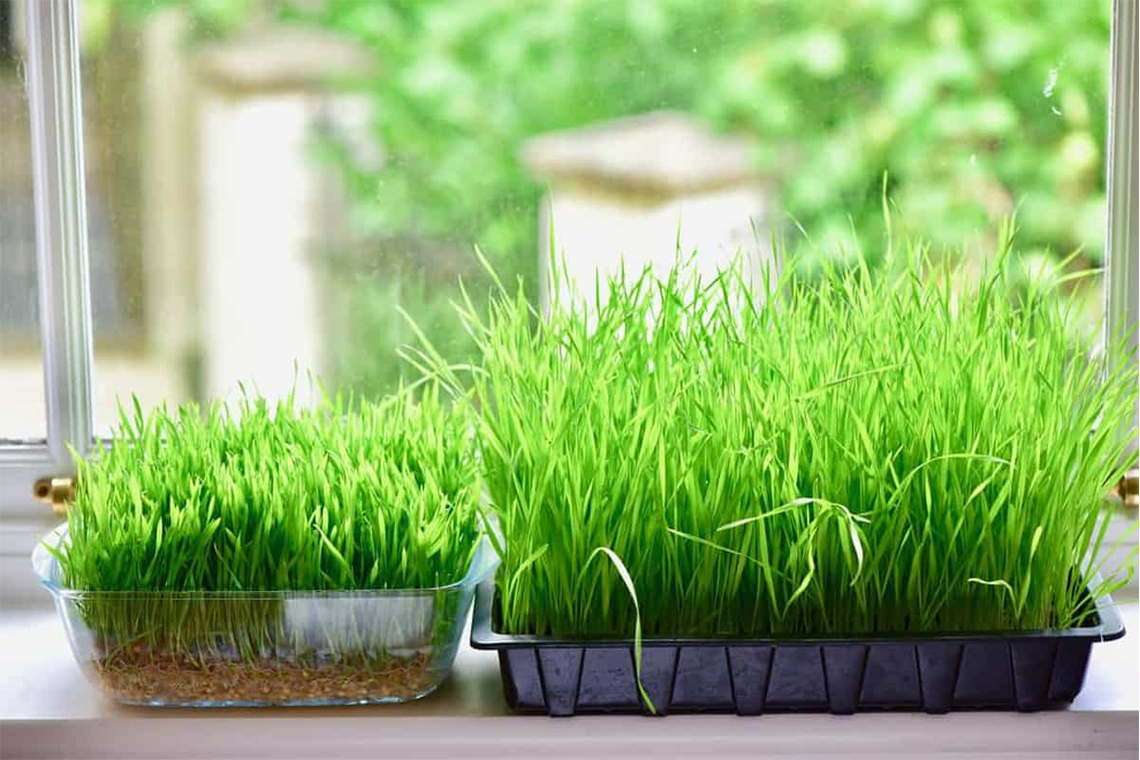Wheatgrass is a popular health food that is known for its high nutritional content. It is packed with vitamins, minerals, and antioxidants that are essential for good health. It is also easy to grow at home, making it a convenient addition to your daily diet. Here are some simple steps to help you grow wheatgrass at home.
Choose the Right Seeds
The first step to growing wheatgrass at home is to choose the right seeds. Look for seeds that are specifically labeled as wheatgrass seeds. These seeds are untreated and are specifically intended for growing wheatgrass.

Prepare the Soil
Next, prepare the soil for planting. Wheatgrass grows best in a nutrient-rich soil that is moist but well-drained. You can use a potting mix or a combination of soil and compost. Fill a shallow tray or container with the soil mixture and level it out.
Plant the Seeds
Spread the wheatgrass seeds evenly over the soil. You can plant the seeds close together since they will be harvested before they have a chance to grow into mature plants. Press the seeds gently into the soil and cover them with a thin layer of soil.
Water the Seeds
Water the seeds thoroughly, making sure that the soil is evenly moist. Avoid overwatering the seeds, as this can cause them to rot. Keep the soil moist but not waterlogged.
Provide Adequate Light
Wheatgrass needs plenty of light to grow. Place the tray or container in a bright, sunny location, such as a windowsill. If you don’t have access to natural light, you can use a grow light to provide artificial light.
Maintain the Temperature
Wheatgrass grows best in temperatures between 60 and 75 degrees Fahrenheit. Keep the temperature consistent and avoid exposing the plants to extreme heat or cold.
Harvest the Wheatgrass
After about a week, you should start to see the wheatgrass sprouting. When the grass reaches a height of 6 to 8 inches, it is ready to harvest. Use scissors to cut the wheatgrass just above the soil line.

Enjoy Your Wheatgrass
Wheatgrass can be used in a variety of ways. You can juice it and drink it straight, or mix it with other fruits and vegetables to make a healthy smoothie. You can also use it in salads or as a garnish for other dishes.
tips to Grow Wheatgrass at Home
Soak the seeds: Soaking the wheatgrass seeds overnight before planting can help to speed up the germination process.
Use organic seeds: It is best to use organic seeds to grow your wheatgrass. This ensures that the seeds are not treated with any harmful chemicals or pesticides.
Use a spray bottle to water the seeds: To avoid overwatering the seeds, use a spray bottle to mist the soil instead of pouring water directly onto it.
Use a tray with drainage holes: A tray with drainage holes helps to prevent waterlogging and allows excess water to drain away.
Use a fan: A small fan can be used to provide a gentle breeze to help strengthen the wheatgrass stems and prevent mold growth.
Keep the soil covered: Covering the soil with a layer of plastic wrap or a lid can help to retain moisture and promote germination.
Harvest at the right time: Wheatgrass is at its nutritional peak when it is around 7 to 10 days old. It is important to harvest the wheatgrass at this stage to get the most nutrients.
Use fresh soil for each batch: To avoid soil-borne diseases, use fresh soil for each batch of wheatgrass.
Compost the leftover soil: After harvesting the wheatgrass, the leftover soil can be added to a compost bin to be used for other plants or vegetables.
Rotate the tray: To promote even growth, rotate the tray every day or so to ensure that all parts of the wheatgrass receive equal amounts of light.

Avoid using tap water: The chemicals in tap water, such as chlorine and fluoride, can inhibit wheatgrass growth. It is best to use filtered water or distilled water instead.
Use high-quality soil: Using high-quality soil that is free from contaminants and rich in nutrients can help to promote healthy wheatgrass growth.
Use a dehydrator: If you have harvested more wheatgrass than you can use immediately, you can dry it using a dehydrator and store it for later use.
Experiment with different growing methods: Wheatgrass can be grown in soil, hydroponically, or using a sprouting jar. Experiment with different growing methods to see which one works best for you.
Clean the tray between batches: To avoid contamination, clean the tray thoroughly with soap and water between each batch of wheatgrass.
Growing wheatgrass at home is a fun and easy way to incorporate more nutrients into your diet. By following these tips, you can ensure that your wheatgrass grows healthy and strong. Remember to start with good quality seeds, provide adequate light, water, and temperature, and harvest at the right time. Enjoy the benefits of this nutritious superfood!












